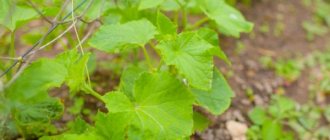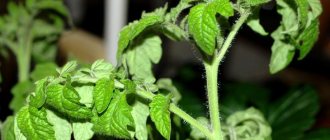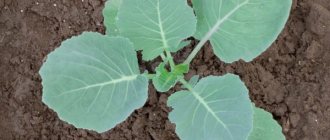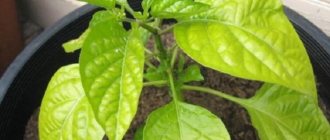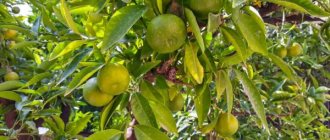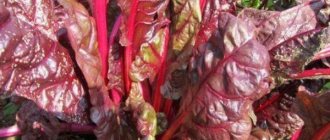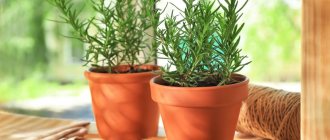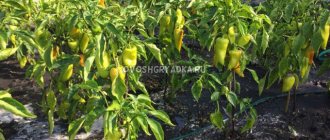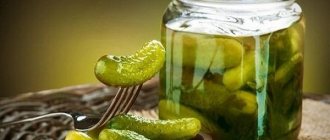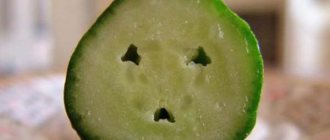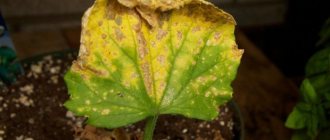There can be many reasons why cucumber leaves curl: errors in care, diseases, and invasion of pests. How to figure out what exactly led to the problem and what to do to help the cucumbers?
Many summer residents prepare seeds for sowing and care for the seedlings, seemingly according to all the rules, but as a result they are perplexed why the leaves of cucumbers curl after picking or during growth in a greenhouse or in open ground.
Let's look at the eight most likely causes of this phenomenon and how to eliminate them.
Insufficient watering
Most often, cucumber leaves curl due to an oversight: they did not have time to water on time, dry weather. The result is that the leaves of the plant dry out and curl into tubes.
The solution to the problem is simple: you need to restore the water balance of the soil. Proper watering of cucumbers in a greenhouse is when the soil is moistened to a depth of at least 10 cm.
It is also worth considering that dry air is detrimental to cucumbers, especially when grown in protected soil. Do not forget to regularly spray the bushes and the inside of the greenhouse (this should be done in the first half of the day so that the drops of water have time to dry by the evening). The optimal air humidity in a greenhouse for cucumbers is 80-90%.
Nutrient deficiency
Another possible reason for leaf deformation is “starvation” of plants.
If you notice that the cucumber leaves have turned pale and are curling inward, it is possible that the problem is a lack of nitrogen. In such plants, the rachis (central vein) is stretched out, and the leaf plate behind it “does not keep up” - so the cucumber leaf curls.
Fertilizing with urea, ammonium nitrate or any other nitrogen fertilizers (according to the instructions) will help stimulate the growth of leaf mass.
If cucumber leaves curl upward, this is most likely a signal of potassium deficiency in the soil. Such plants need to be fed with a solution of potassium salt (3 tablespoons per 10 liters of water).
- How to feed cucumbers for good growth
If you do not want to use chemicals for feeding, they can be easily replaced with improvised means.
When and what to feed cucumbers
A significant point in the process of growing cucumbers is proper feeding. The leaves of cucumber seedlings will curl if you do not follow all the recommendations for this process. Adding microelements to the soil is necessary before planting the plant in the soil and after. Before planting, it is recommended to weed the ground and fertilize it. Another important aspect is compliance with crop rotation.
The first application of fertilizers should be made after the appearance of the third cucumber leaf. You can use both organic and mineral substances. Manure and Ammophos are priority fertilizers.
Do the second feeding at the time when flowering begins. In this case use:
- phosphorus compounds;
- wood ash solution;
- boric acid.
It is recommended to check the vegetable for curled leaves. This will indicate the gardener's further actions. Wrinkled leaves require more attention and care. The third application of fertilizer occurs at the time of fruit formation. In this case, you need to use potassium nitrate and urea.
Stop fertilizing before the first harvest. When it is harvested, it can provide the soil with new nutrients to continue fruit formation and double the harvest.
On a note!
Moistened soil better conducts various nutrients to the roots of the plant. Therefore, you should water the cucumbers along with fertilizing.
Burn or hypothermia
Cucumbers, like any living organism, react equally poorly to both an excessive decrease and a sharp increase in temperature. As a result of a sudden cold snap, the leaves turn yellow and wrinkle. The same thing happens when plants are exposed to excessively high temperatures.
If you grow cucumbers on a balcony, windowsill or in a glass greenhouse, plant the seedlings so that the leaves do not come into contact with the glass. It heats up and cools down quickly, and this negatively affects the development of the young plant.
Prevention
In order to prevent the development of dangerous diseases and deformations of leaf blades on cucumber leaves, it is recommended to plant varieties with high immunity. Also, do not neglect preparatory measures: treat planting material, harden it, disinfect it. Planting of seedlings should be done in fertile soil with normal acidity and sufficient air and moisture permeability. When choosing a planting site, it is recommended to adhere to the rules of crop rotation. It is better to prepare the garden bed in the fall.
Curling of leaf blades on cucumbers is a common problem, but with proper care and proper planting it can be avoided. Carrying out preventive measures against parasitic individuals and diseases will only increase the chances of harvesting a bountiful harvest.
Pest Infestation
Let’s say you water your cucumbers regularly, don’t allow them to overheat or overcool, don’t forget about fertilizing, but the leaves still curl. What can be wrong?
Another common reason for deformation of the leaf plate is the “attack” of insect pests. This is easy to check: just look at the back of the sheet. Aphids or spider mites - the worst enemies of cucumbers - will be visible to the naked eye.
If your fears are confirmed, there is no need to waste time: insects not only inhibit the development of the plant, drawing out all the juices from it, but can also transmit viruses.
To get rid of aphids, cucumbers are sprayed with insecticides (Aktara, Inta-Vir, Konfidor Extra, Fitoverm, etc.). Ticks are fought with acaricides (Antikilesch, Bitoxibacillin, Fitoverm, etc.).
Fufanon-Nova will help you cope with mites and aphids at the same time, as well as most pests of cucumbers: dilute 13 ml of the drug in 10 liters of water and spray the affected plants.
Many of the pest control drugs are dangerous for humans, so they should be used with caution - before the formation of ovaries, if you do not want to receive a dose of poison along with fresh summer salad.
If you are against any “chemistry”, then try to solve the problem with the help of folk remedies. To control cucumber pests, gardeners most often use infusions of onion peels, dandelion, celandine or wood ash. So that after spraying the infusion stays on the leaves longer, soap is added to it as an adhesive.
Garlic infusion is also effective against aphids and spider mites. To prepare it, grind 500 g of cloves, pour 3 liters of water over them and leave for 5 days.
- Pests of cucumbers in greenhouses and open ground: description, photos, control measures
Protecting cucumbers from pests is the most important task of a gardener, because otherwise you can easily be left without a harvest!
Causes of leaves curling in cucumbers
Sun or chemical burns, various infections, improper irrigation - excessive or insufficient, lack of the required amount of nutrients, pest damage - there are many reasons why the leaf plates of cucumber bushes curl.
Violation of the landing pattern
Very often, the cause of problems is the wrong scheme for planting cucumbers in a permanent place. If the bushes are planted close to each other, they lack sunlight, nutrition, and air circulates less well between them. This can lead not only to curling and yellowing of leaves, but also to the development of fungi and viruses.
A factor such as non-compliance with planting specifications can have a negative impact: seedlings should be moved to a permanent place only after the soil has warmed up to +12°C and the risk of frost has passed. Seedlings should not be “younger” than 25 days. For better access to plants, light, air, and lashes are recommended to be tied to supports.
Weather
The culture prefers warm, humid summer days. Any deviations from this lead to the fact that the cucumbers begin to get sick, the fruits become less aromatic, juicy, and crispy, the bushes wither, the leaves shrink, dry out, and curl. For example, from excessive exposure to sunlight, the leaves curl and dry quickly.
Improper watering
Cucumbers love moisture and therefore need regular watering. Moderately moist soil is the key to juicy, non-bitter fruits that are tasty and aromatic. When the soil is dry, the development of cucumber bushes slows down. Excessive amounts of water have a negative effect on the plant.
Lack of moisture
Often the cause of leaf blades curling inward is hot weather. Gardeners say: it is extremely important to restore the water balance. First, you should loosen the soil under the plant to a depth of 6-8 centimeters, and then generously water it with warm water.
If cucumbers grow in a greenhouse, they need to be provided with high air humidity. This can be done using a container with a spray bottle or watering over the leaves.
Excess water
Excessive amounts of water also negatively affect the condition of cucumber bushes. Stagnation of water provokes rotting of the roots, which inevitably leads to the death of plants. The leaves curl and lose their elasticity. You can understand that the reason for the curling of the leaves is due to abundant watering by the fact that a crust of salt appears on the soil around the plants - whitish in color, the soil looks swampy.
Experienced gardeners give useful advice: stop watering and wait until the soil dries. In the future, you need to moisturize the plants moderately - only with warm water that has settled well. Before the cucumbers begin to bloom, they should be watered no more than once every three to four days; after the cucumber ovaries appear, the number of waterings should be once every couple of days. The beginning of the fruiting phase should be accompanied by daily watering (rains are a reason to stop watering completely!).
See also How to grow and care for cucumbers in a polycarbonate greenhouse
Lack of nutrition
Cucumber leaves shrink and curl the most when the plant lacks potassium or nitrogen. In the first case, the leaves curl outward, and in the second, inward. If there is a lack of magnesium, in addition to curling, the leaves wither; if the plant lacks copper, the leaf blades may begin to turn pale. You can fill in the missing elements with the help of fertilizing. Gardeners recommend using:
- ash;
- saltpeter;
- potassium sulfate;
- potassium salt.
Ammonia burns
Sometimes gardeners, after applying fertilizers such as unrotted manure or ammonium nitrate, notice that the leaves are spinning inward. From this we can draw a simple conclusion: the cause of the problem is an ammonia burn. In this case, it is necessary to remove the top layer of soil - along with nutrients. Then you need to add fresh soil and water the plants thoroughly.
Parasites and diseases
Deformation of cucumber leaves is observed as a result of diseases characteristic of cucumbers and pest attacks. So, the leaf plates curl if the cucumbers suffer from:
- powdery mildew;
- rot - white or gray;
- cladosporiosis;
- mosaics;
- fusarium.
In the initial stages of the disease, it can be cured using various chemicals. It is best to do this before fruit formation begins. If the problem persists during the ripening of vegetables, it is recommended to use folk remedies.
If the edges of the curling leaves turn yellow, you should carefully inspect the plants for pests - the cucumbers could be attacked by aphids and spider mites. Did you find any insects? Cucumbers need to be treated with Barguzin and Fitoverm.
Powdery mildew
It is not difficult to distinguish healthy bushes from those affected by powdery mildew: the leaf blades curl, dry out, and a light gray coating appears on them. Cool and wet weather allows the pathogen to infect nearby plants. The main factors that provoke powdery mildew are improper plant moisture and excessive fertilization with compounds that contain nitrogen.
Protecting cucumbers from disease is easier than curing it: you need to water the bushes only with warm water, weed the soil, loosen and mulch it. After harvesting, it is recommended to remove plant debris and destroy them.
Root rot
If cucumbers are affected by this disease, the roots turn yellow and dry out, the stem becomes thinner, and the plant dies. The following can lead to root rot:
- cold water - regardless of whether it is watering or precipitation;
- failure to maintain distance between plants;
- sudden temperature change;
- deep sowing of seeds.
It will not be possible to cure cucumbers; the affected bushes will need to be removed from the ground along with the roots, burned, and the ground must be treated with a solution of potassium permanganate. For preventative purposes, the remaining plants should be treated with copper sulfate.
Virus infection
When cucumbers in a garden bed or greenhouse are affected by any viral diseases, this can first of all be determined by the appearance of the leaves. The green plates begin to curl, wrinkle and turn yellow, and spots appear on the surface of the green mass. Viruses are usually carried by various insects; contaminated seeds may be the cause. For this reason, gardeners are advised to inspect plants from time to time for the presence of insect colonies, and disinfect seeds before sowing.
In the greenhouse
Growing crops in a greenhouse has many advantages: you do not need to adapt to climatic conditions - you can independently regulate humidity and temperature levels, and protect from adverse weather conditions. But even in a greenhouse you can notice that the cucumber leaves have curled. There are several reasons:
- planting in unheated soil;
- low humidity level combined with high temperature;
- lack of nutrients.
See also White leaves on cucumbers: what to do and how to process seedlings
Regular ventilation, establishing a temperature regime suitable for the crop, and adding nutrients will help solve the problem. You also need to monitor the temperature - it should not fall below +22°C.
On the windowsill
You can also grow aromatic crispy vegetables on the windowsill. True, when growing at home you can also encounter leaf curling. This is affected by frequent watering, lack of fertilizers, low air humidity, unsuitable soil, and dense planting of seeds.
Powdery mildew
In mid-summer, the appearance of powdery mildew on vegetable crops is not easy to avoid. If you miss the moment, the leaves begin to turn yellow and curl.
Factors that provoke the development of this disease are dense plantings, rainy and cool summers, poor ventilation of greenhouses (or balconies where cucumbers are grown), watering with cold water, and sudden temperature fluctuations.
You can tell that a leaf is curling precisely because it is affected by powdery mildew by its characteristic whitish coating.
At the first signs of disease, spray the cucumbers with a solution of baking soda (dissolve 2 tablespoons of soda in 10 liters of water) with the addition of laundry soap. To combat powdery mildew, use Alirin-B, Sporobacterin or Fitosporin-M.
Root rot
Often, cucumber leaves curl at the edges and turn pale as a result of root rot. However, the most characteristic symptoms of this disease are wilting and yellowing of leaves, starting from the lower ones. In this case, the stem near the ground becomes brown. Most often, the disease affects cucumbers growing in a greenhouse, but sometimes those plants that are in open ground also suffer from root rot.
To avoid this problem, before planting, disinfect the soil with a pink solution of potassium permanganate, avoid over-wetting the plantings and do not water the plants with cold water. You should also regularly ventilate the greenhouse to prevent overheating of the air.
Dust the lower part of the plants with chalk, ash or coal. As a preventive measure, use Fitosporin-M (soaking the seeds before sowing and treating the leaves during the growing season) or Sporobacterin and Fitolavin (watering at the root).
- Main diseases of cucumbers - photos, descriptions and methods of treatment
Any disease is difficult to cure without proper diagnosis. This also applies to cucumbers, whose diseases are very similar in symptoms, but the “medicines” required in each case are different.
Weather conditions
The scorching sun and frost can also leave their marks on the foliage. If the owner watered the cucumbers in the full sun, then the droplets that generously covered the leaves would attract the sun. And this means numerous burns on a delicate plant: the appearance of spots, yellowness on the edges and their curling.
Heat-loving cucumbers also react sharply to hypothermia. In open ground, this danger is higher than in greenhouse conditions: these are recurrent frosts and prolonged rains. At home: planting plants on a cold windowsill or balcony, improper hardening of seedlings, planting too early in soil that has not yet been fully warmed up (the soil should warm up to +12 degrees and the threat of frost should go away).
Foliage burns can also be caused by foliar feeding. If the owner dilutes the preparations by eye, exceeds the permissible dose, or carries out this procedure more often than it should, the plant will sooner or later react with yellowing and curling of the leaves. Therefore, it is important to read the instructions for each drug and strictly follow the dosage.
If seedlings are grown in a greenhouse or on a balcony, do not allow the leaves to come into contact with the glass. If it gets too cold or hot, the plant will not be able to escape and will get sick.
